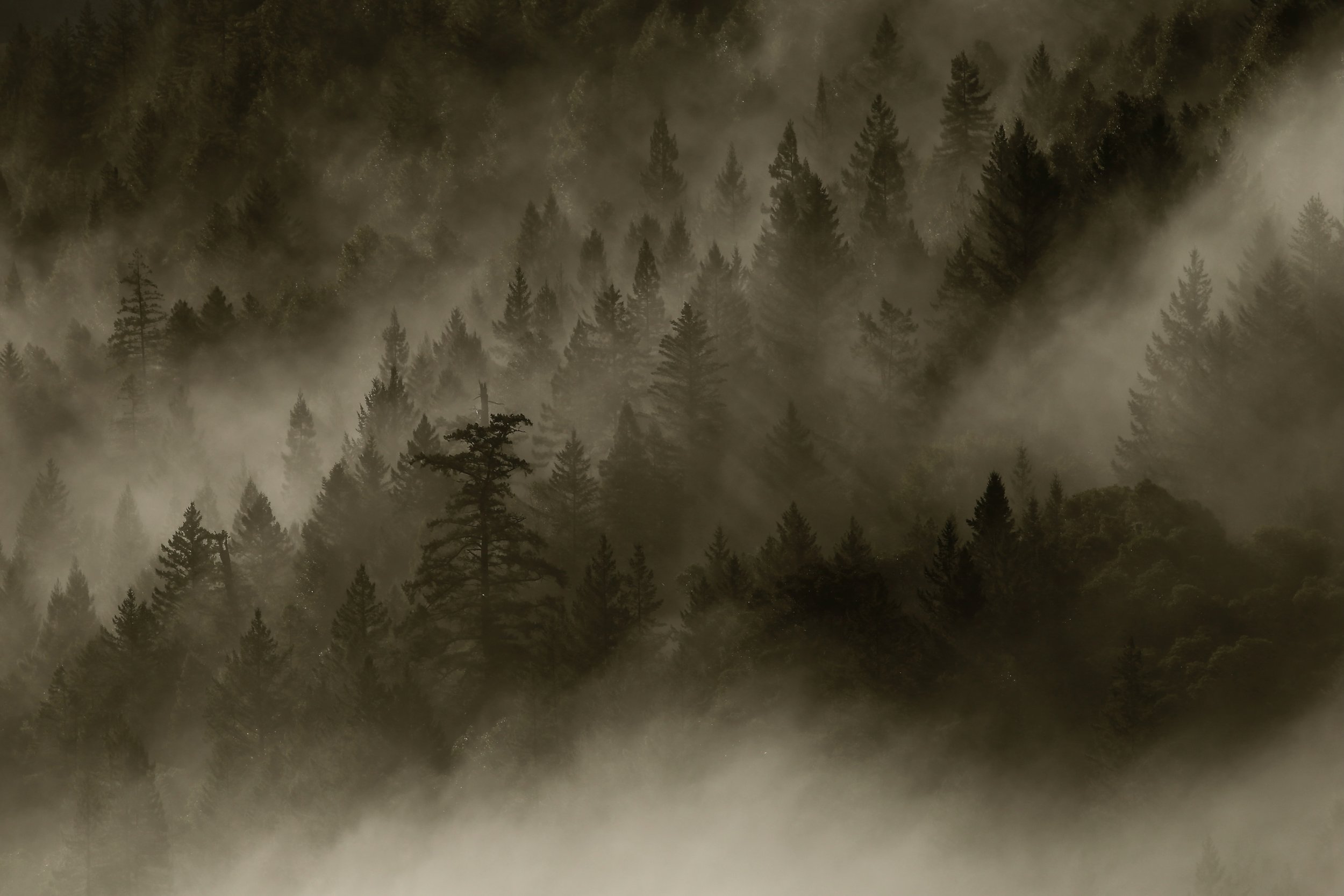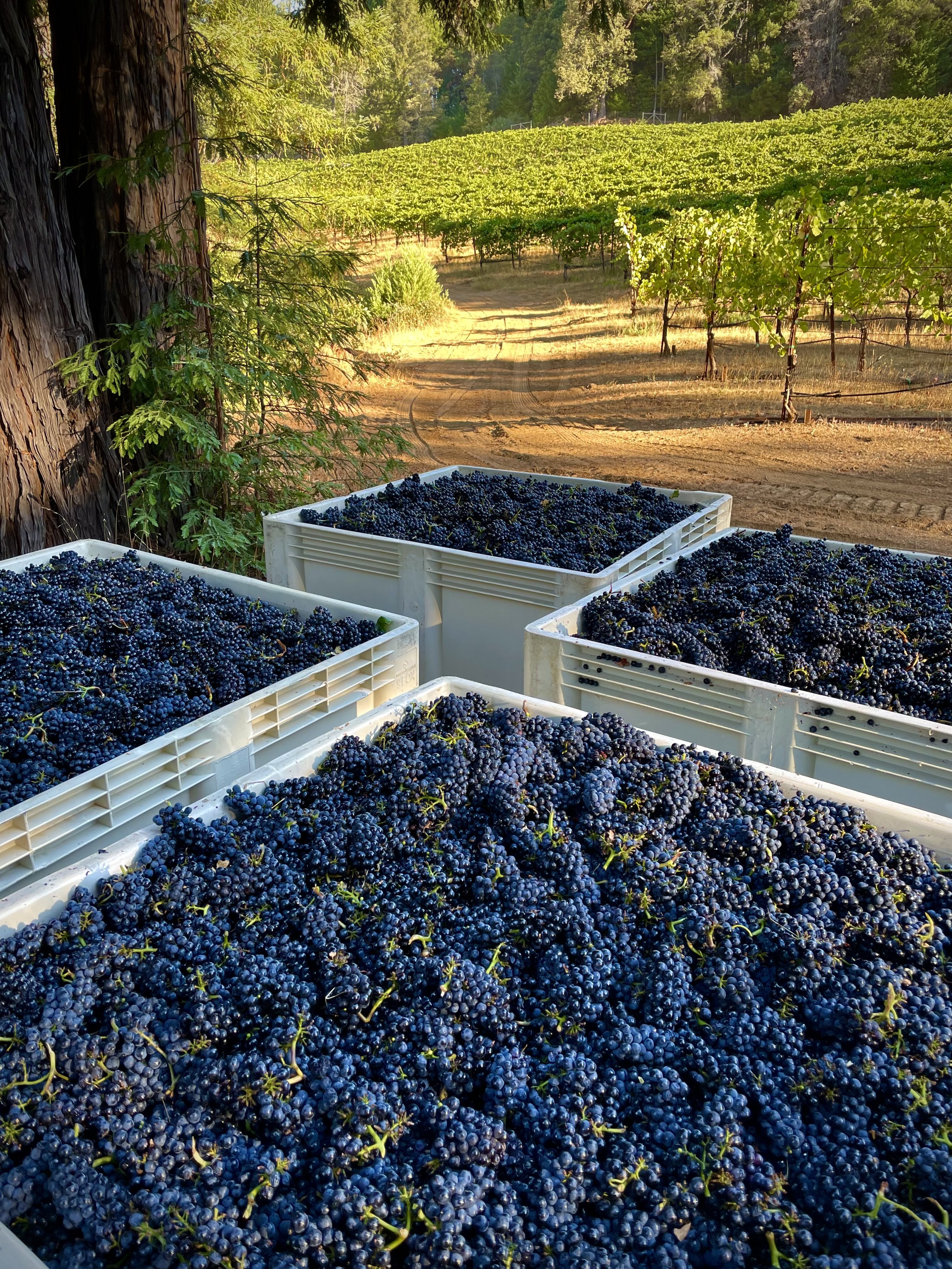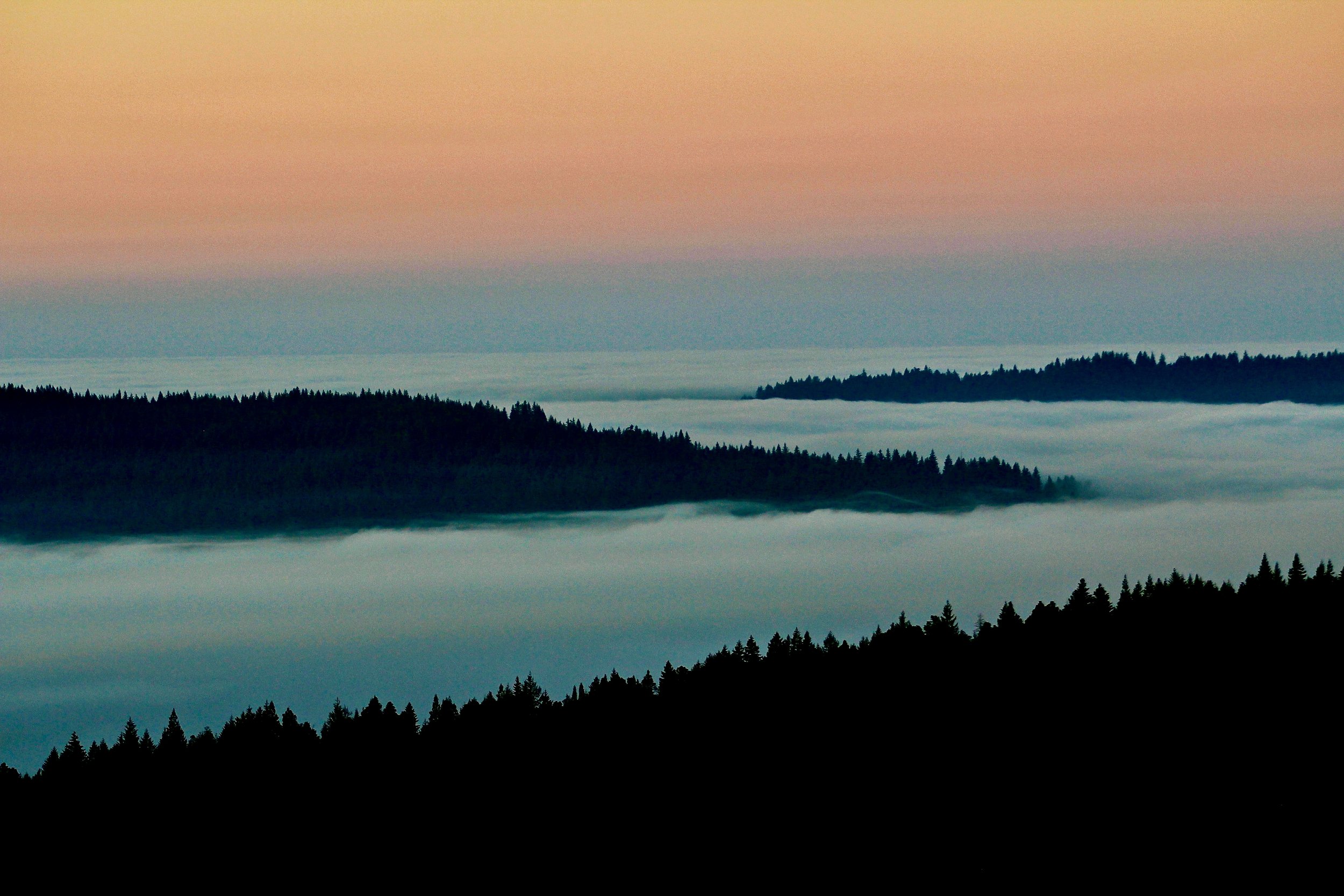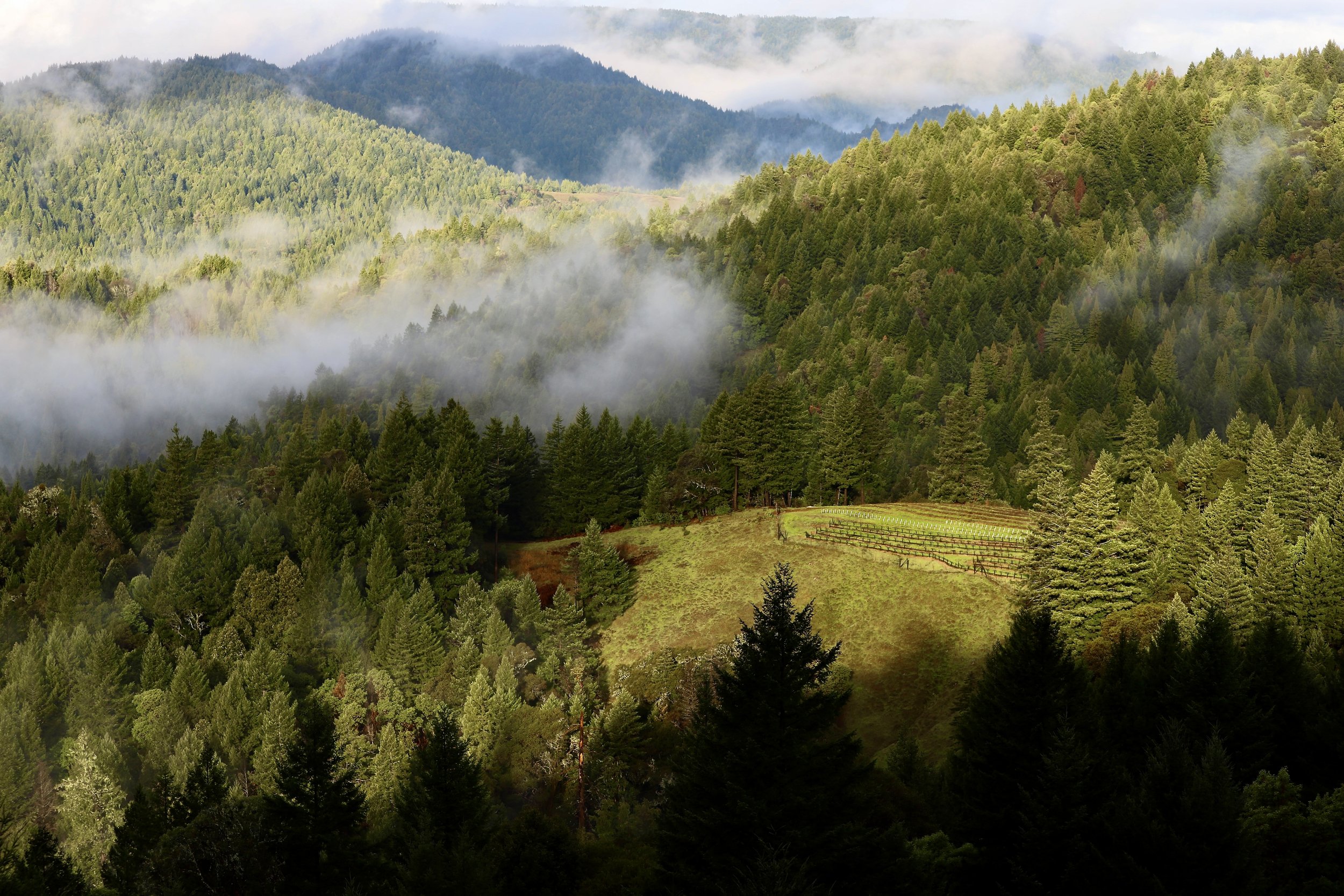
Mendocino Ridge AVA
The Mendocino Ridge AVA floats above the Anderson Valley and Mendocino appellations in California
The only non-contiguous AVA in the United States, the region consists of steep, timber-covered ridgelines, jutting above 1200 feet in elevation. Positioned adjacent to the Pacific, the ridgetops rise above the fog which cools the coast and provides the vineyards with uninterrupted sunshine. Historically, in the late 1800’s the area was settled by Italian immigrants who brought Zinfandel cuttings with them to plant along the coast ridge tops, making some of California’s most iconic Zinfandels. Today, the Mendocino Ridge AVA has become Pinot County, the AVA with its cool coastal climate and high elevations are uniquely suited to the fickle grape variety.
Making Sense of Mendocino
Slow to Grow, Slow to Change: Mendocino’s History Under Vine
An excerpt from GuildSomm posted by Kelli White April 19, 2018
“...Mendocino Ridge is a large region that spans a fair amount of dramatic and forbidding mountain terrain. Vineyards can be found as high as 2,600 feet, but only sites located at or above 1,200 feet in elevation can claim the AVA. That said, anything planted below 1,200 feet is unlikely to ripen, as the area is so chilly that fruit needs to be grown above the fog line and in full sun to thrive. Because the appellation is composed of a series of peaks, the AVA map more closely resembles an archipelago than a typical wine region.
Though the Mendocino Ridge AVA shares a border with the equally sprawling Sonoma Coast AVA, the regions are fairly distinct. Mendocino Ridge tends to feature significantly higher elevations and, instead of the sandy Goldridge soils that typify the southern Sonoma coast, is covered in what is known colloquially as “timber soils”—effectively, well-draining sandstone and loam dominated by fractured stone. Wind and rain are the primary enemies here, as both are quite extreme and conspire to curtail ripeness. Labor is also a challenge for such a remote region. Steve Alden of Murder Ridge, one of the architects of the AVA, refers to life in this AVA as “farming in the wilderness.” Indeed, my vineyard tour with him included stops to examine bear marks on fence posts, wild boar damage, and rafters of terrorizing turkeys. “I used to have statues of coyotes in the vineyards, to scare away the grape-eating turkeys, but the wild pigs destroyed them,” Alden confessed with a weary sigh.





